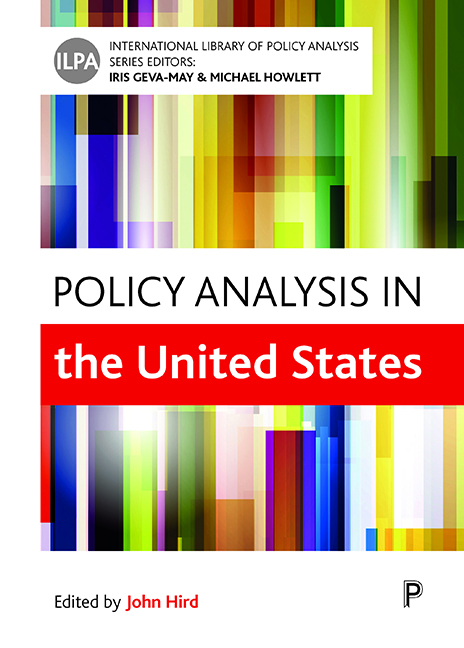Book contents
- Frontmatter
- Contents
- List of tables and figures
- Notes on contributors
- Editors’ introduction to the series
- Introduction
- Part One History, styles, and methods of policy analysis in the United States
- Part Two Policy analysis by governments
- Part Three Policy analysis outside of government
- Part Four Policy analysis education and impact internationally
- Index
Twelve - Policy analysis by corporations and trade associations
Published online by Cambridge University Press: 12 April 2022
- Frontmatter
- Contents
- List of tables and figures
- Notes on contributors
- Editors’ introduction to the series
- Introduction
- Part One History, styles, and methods of policy analysis in the United States
- Part Two Policy analysis by governments
- Part Three Policy analysis outside of government
- Part Four Policy analysis education and impact internationally
- Index
Summary
Compared with other organizations, corporations have a distinct advantage among those interests that use policy analysis to influence government. Corporations employ many of the components of policy analysis such as calculating the net present value, discount rate, internal rate of return of choice alternatives, and environmental management systems (EMS) when making routine business decisions. Corporations also employ more lobbyists, contact public officials more frequently, file more comments on proposed regulations, sit on more government advisory committees, and hire more policy analysis firms than other interest organizations (Kerwin 2003; Baumgartner et al. 2009; Godwinet al. 2013). Stanford business school professor David Baron (2013) argues in Business and Its Environment that firms choosing to invest in political activities will have an advantage over other firms. Baron demonstrates that investing in policy analysis and political action often has a higher rate of return than investing in new technology, hiring additional workers, or using other mechanisms that increase profits.
There are key differences, however, between policy analysis by corporations and trade associations (hereafter CTAs) and analyses carried out using the techniques set forth in textbooks. Policy analysts in the public sector should identify the policy option that will provide the greatest net benefit to the public; CTA policy analysts identify the option that will provide the greatest net benefit to their organization. A benefit-cost analysis prepared by the public sector should contain all major positive and negative externalities generated by each policy option. Private sector analyses, unless they are analyses required by governments, typically exclude externalities that do not affect their organization. Public sector analysts may weight benefits and costs to different sets of people. The Environmental Protection Agency (EPA), for example, weights health costs to children more heavily than health costs to adults. Corporations give the greatest weight to the factors that will have the greatest impact on the corporation's profits.
Economic, scientific, and technical analyses such as benefit-cost, costeffectiveness, risk assessment, sensitivity analysis, and EMS are one category of the tools that CTAs employ. These tools are products of underlying models that predict the impacts of future human behavior on outcomes of interest to the CTAs.
- Type
- Chapter
- Information
- Policy Analysis in the United States , pp. 223 - 244Publisher: Bristol University PressPrint publication year: 2018



